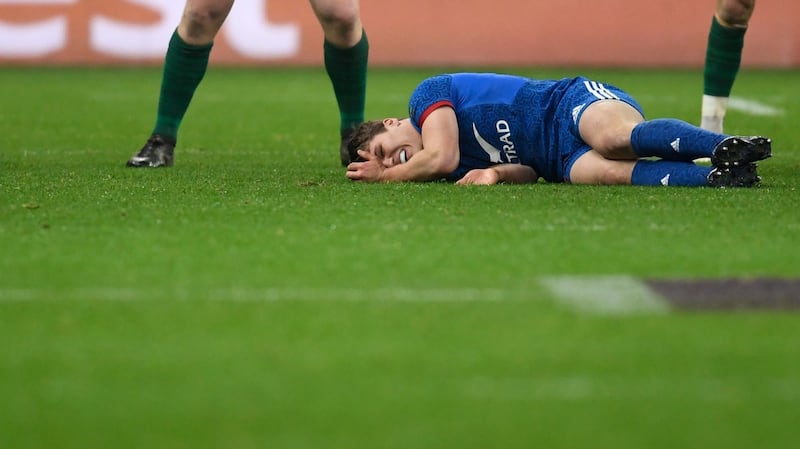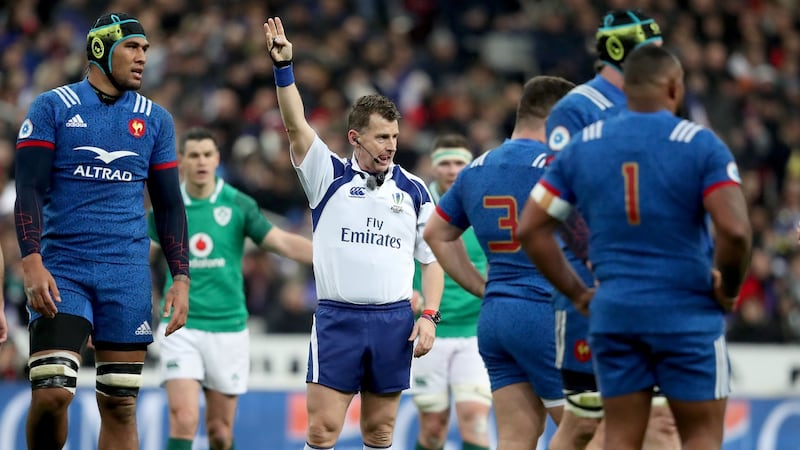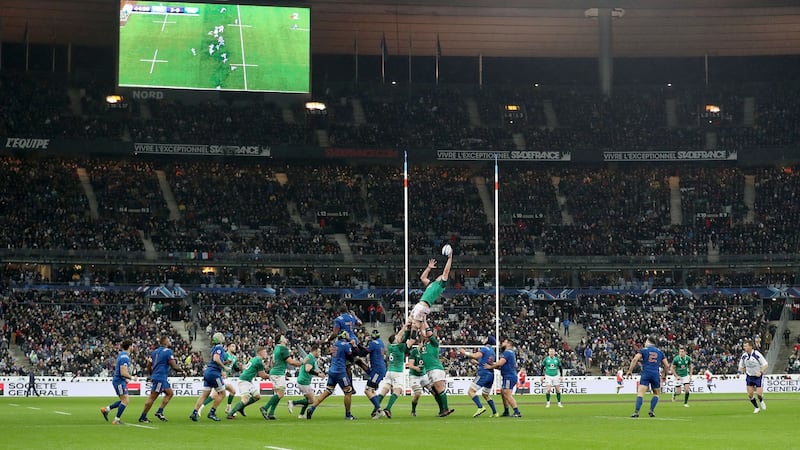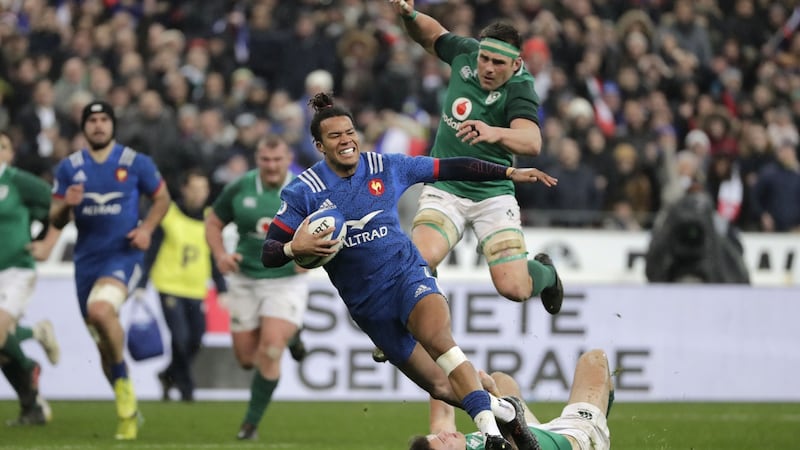Jonathan Sexton's drop goal will become an iconic moment in Irish sport if this Ireland team go on to win a Six Nations Championship or a Grand Slam. It's not too shabby in a standalone context either, 24 hours after Ireland escaped from Paris with only their third victory since Italy bolstered the membership ranks in 2000.
Winning won’t camouflage the shortcomings in some aspects of the performance but a key going forward in the tournament will be to derive some momentum from a fraught evening in the French capital and to absorb the lessons and rectify the imperfections.
The weather made for difficult conditions both in terms of handling and under foot as was unfortunately emphasised in the knee injuries suffered by Ireland openside flanker Josh van der Flier and replacement French scrumhalf Antoine Dupont; the latter was to inadvertently provide one of the game's most controversial moments. Let's start there.
WHEN IS A HIA NOT A HIA?
It beggars belief in this day that with the issues surrounding brain trauma (concussion) in rugby that the official match doctor decided that a player (Dupont), quite obviously suffering a knee injury in a tackle, was removed to be examined for a Head Injury Assessment (HIA), thereby allowing the player he replaced (Maxime Machenaud) to come back on.
The French players initially indicated to referee Nigel Owens that Dupont suffered a head injury. Owens correctly stopped the match indicating that a HIA protocol was to be observed. The Irish players led by Sexton question what appears to be at face value sharp practice by the home side. Their concern is valid.
Owens then seeks clarification and is told that the match doctor has insisted that Dupont will undergo a HIA, presumably once his ripped knee ligaments have been tended to. World Rugby should seek an explanation as to what went on; there has to be some transparency and honesty, because the HIA protocol should never be brought into disrepute.
It is too important a protection tool for players. If there is even a scintilla of doubt then a player should be removed but the optics in Paris were very poor and need to be investigated thoroughly - with the Six Nations having started a review into a number of incidents.

REFEREEING
Nigel Owens is a superb referee but this wasn’t one of his better matches.
From the moment he, and in fairness his officials, missed the no arm tackle - it was a frontal charge - by French scrumhalf Machenaud on Rob Kearney it set a tone for the afternoon.
The rain and pitch surface were huge contributors to the scrappy nature of the game but it was the lack of consistency in interpretation that was baffling. Bundee Aki was penalised for not rolling away despite being deliberately trapped while French captain Guilhem Guirado wasn’t punished for the same offence minutes later.
There were more than a handful of incidents - some going against the French - but it was in that 40-phase plus end game that the inconsistencies were most evident. Owens had penalised the French for not rolling away several times but despite two nailed-on instances he refused to blow his whistle. An offence is an offence irrespective of the time on the match clock or the state of play on the scoreboard.
By his own high standards this wasn’t his usual level; like any player though Owens is entitled to the odd off day.

NO STRIKE PLAYS
The French correctly identified that Ireland’s lineout is fundamental to their attacking ploys and so spent the afternoon seeking to disrupt, pretty effectively, the quality of ball that the visitors managed in this facet of the game.
The French pack splinted several Irish mauls, denying the green shirts momentum, and the home side also contested athletically in the air, forcing Irish players into some injudicious tap backs and thereby putting Ireland scrumhalf Conor Murray under pressure.
There were a handful of occasions, starting with the first lineout of the game, when Ireland did get clean, quick ball off the top, thus allowing them to get their midfield runners one-on-one with opponents, over the gain-line and through the initial blue line. The difference was tangible and demonstrated what Ireland could do with some tempo to their patterns.
When Ireland’s ball was slow, France were able to double-team in the tackle, stopping the visitors and forcing them to over-commit to rucks to rescue possession or into kicking ball away. Ireland were very linear and narrow at times in possession.
There were too many ruck inspectors at times and because they didn’t get momentum from regularly getting over the gain-line and recycling quickly, the loop plays were largely ineffective and lateral, easily read by the French defence that pushed up at speed.

NO TEAM DYNAMIC
Ireland players acquitted themselves well as individuals, some were outstanding - James Ryan, Iain Henderson, Rob Kearney, Sexton, Bundee Aki, and replacement Dan Leavy - while others like Peter O'Mahony, CJ Stander, Cian Healy, Rory Best, Tadhg Furlong, Conor Murray, Josh van der Flier, until his unfortunate injury and Robbie Henshaw worked diligently on both sides of the ball.
Keith Earls was superb in the occasional brief cameo, while Stockdale too showed he could cut a line. However, Ireland could not translate that into a cohesive team dynamic, with the traditional fluency and rhythm of the attacking patterns. The more claustrophobic the French defence, the more Ireland veered from the collective to the individual.

DEFENCE
Andy Farrell won't be best pleased with the Teddy Thomas try where Irish players switched off for a millisecond and paid a heavy penalty, albeit that it is a valuable lesson for the weeks ahead. Ireland's kick/chase was a little disjointed at times and not just in this instance.
Overall Ireland’s defence was organised, mixing up line speed intelligently, disciplined for the most part and comfortably negating most of what France threw at them, which for the most part was one-out carriers.
On a different day Ireland's scrum might have won them a few penalties but they suffered from the inconsistency of interpretation here too. Ireland coach Joe Schmidt will take the win, move on and hope that the win is a lightning rod for things to come.















